-
 Bitcoin
Bitcoin $106,731.2224
-1.05% -
 Ethereum
Ethereum $2,444.9804
-1.20% -
 Tether USDt
Tether USDt $1.0003
0.01% -
 XRP
XRP $2.1882
0.09% -
 BNB
BNB $651.1435
-0.61% -
 Solana
Solana $148.3252
-2.09% -
 USDC
USDC $1.0000
0.01% -
 TRON
TRON $0.2787
0.55% -
 Dogecoin
Dogecoin $0.1598
-3.16% -
 Cardano
Cardano $0.5520
-2.43% -
 Hyperliquid
Hyperliquid $39.0960
-2.64% -
 Bitcoin Cash
Bitcoin Cash $516.9519
2.98% -
 Sui
Sui $2.7011
-2.95% -
 Chainlink
Chainlink $13.0582
-1.71% -
 UNUS SED LEO
UNUS SED LEO $8.9250
-2.53% -
 Stellar
Stellar $0.2359
-0.18% -
 Avalanche
Avalanche $17.3856
-3.73% -
 Toncoin
Toncoin $2.8095
-3.56% -
 Shiba Inu
Shiba Inu $0.0...01121
-1.95% -
 Litecoin
Litecoin $85.2795
-0.85% -
 Hedera
Hedera $0.1471
-2.15% -
 Monero
Monero $319.8004
1.12% -
 Dai
Dai $1.0001
0.01% -
 Ethena USDe
Ethena USDe $1.0001
0.02% -
 Bitget Token
Bitget Token $4.5344
-1.07% -
 Polkadot
Polkadot $3.3224
-2.96% -
 Uniswap
Uniswap $6.9697
-2.75% -
 Aave
Aave $266.1658
-2.25% -
 Pepe
Pepe $0.0...09414
-3.41% -
 Pi
Pi $0.4913
-3.29%
How long will it take for Bitcoin mining to pay back? What are the factors that affect the payback period?
DOGE mining payback depends on hardware costs, electricity rates, mining difficulty, block rewards, and DOGE's market price, with strategies like joining pools and optimizing usage helping reduce it.
May 05, 2025 at 07:00 am
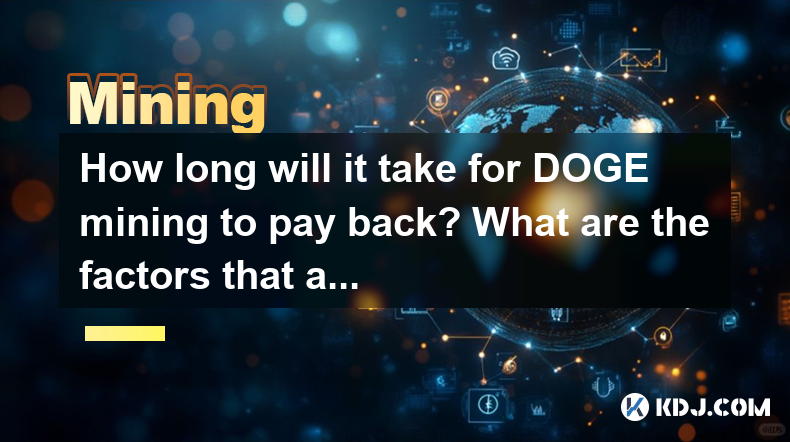
Mining Dogecoin (DOGE) has become a popular activity within the cryptocurrency community, attracting both seasoned miners and newcomers looking to tap into the potential profits of this meme-inspired digital currency. The question of how long it will take for DOGE mining to pay back is complex and depends on several factors. In this article, we will explore the various elements that influence the payback period for DOGE mining and provide a detailed analysis of the process.
Understanding DOGE Mining
Dogecoin mining involves using specialized hardware to solve complex mathematical problems, which in turn validates transactions on the Dogecoin blockchain and rewards miners with new DOGE coins. The process is similar to other cryptocurrencies like Bitcoin, but Dogecoin uses the Scrypt algorithm, which is less demanding on hardware compared to Bitcoin's SHA-256.
To start mining DOGE, miners need to set up their mining rigs, which can range from simple GPUs to more advanced ASIC miners designed specifically for Scrypt-based cryptocurrencies. The choice of hardware significantly impacts the mining efficiency and, consequently, the payback period.
Factors Affecting the Payback Period
Several key factors influence how long it will take for DOGE mining to become profitable. Understanding these factors is crucial for miners looking to maximize their returns.
Hardware Costs and Efficiency
The initial cost of the mining hardware is a primary factor in determining the payback period. High-performance ASIC miners designed for Scrypt algorithms are more efficient and can mine more DOGE per unit of power consumed, but they also come with a higher upfront cost. On the other hand, GPU mining is less expensive to start but may yield lower mining rates.
The efficiency of the hardware, measured in hashes per second (H/s), directly impacts the amount of DOGE a miner can earn. More efficient hardware will mine more DOGE, reducing the payback period.
Electricity Costs
Electricity costs are another significant factor in the profitability of DOGE mining. The power consumption of mining hardware can be substantial, and the cost of electricity varies greatly depending on the miner's location. Miners in regions with lower electricity rates will have a shorter payback period compared to those in areas with higher rates.
To calculate the impact of electricity costs, miners need to consider the power consumption of their hardware and the local electricity rate. For example, if a miner's setup consumes 1,000 watts and the local electricity rate is $0.10 per kWh, the daily electricity cost would be $2.40 (1,000 watts 24 hours $0.10/kWh).
Mining Difficulty and Block Rewards
Mining difficulty is a dynamic factor that adjusts based on the total computational power of the Dogecoin network. As more miners join the network, the difficulty increases, making it harder to mine new blocks. Conversely, if miners leave the network, the difficulty decreases, making mining easier.
The block reward for mining a Dogecoin block is currently set at 10,000 DOGE per block. However, the reward can change over time due to network updates or changes in the mining protocol. Miners need to keep an eye on these changes as they directly affect the profitability of mining.
Market Price of DOGE
The market price of DOGE plays a crucial role in determining the payback period. If the price of DOGE is high, miners can earn more in fiat currency for the same amount of DOGE mined, reducing the payback period. Conversely, if the price of DOGE drops, the payback period will be longer.
Miners should monitor the market price of DOGE and consider selling their mined coins at opportune times to maximize their returns. Some miners choose to hold onto their DOGE in anticipation of future price increases, which can affect the perceived payback period.
Calculating the Payback Period
To calculate the payback period for DOGE mining, miners need to consider their total costs, including hardware and electricity, and compare these to their expected earnings from mining.
- Determine the total cost of the mining setup, including the hardware and any additional costs such as cooling systems.
- Calculate the daily electricity cost based on the power consumption of the hardware and the local electricity rate.
- Estimate the daily mining output in DOGE, taking into account the efficiency of the hardware and the current mining difficulty.
- Convert the daily mining output to fiat currency using the current market price of DOGE.
- Subtract the daily electricity cost from the daily earnings to find the net daily profit.
- Divide the total cost of the mining setup by the net daily profit to find the payback period in days.
For example, if a miner's total setup cost is $1,000, the daily electricity cost is $2.40, and the daily mining output is 1,000 DOGE, with DOGE priced at $0.01, the calculations would be as follows:
- Daily earnings: 1,000 DOGE * $0.01/DOGE = $10
- Net daily profit: $10 - $2.40 = $7.60
- Payback period: $1,000 / $7.60 = 131.58 days
Strategies to Reduce the Payback Period
Miners can employ several strategies to reduce the payback period and increase their profitability.
Joining a Mining Pool
Joining a mining pool allows miners to combine their computational power with other miners, increasing their chances of mining a block and receiving a reward. While the rewards are split among pool members, the more frequent payouts can help reduce the payback period.
To join a mining pool, miners need to:
- Research and choose a reputable mining pool that supports Dogecoin.
- Register an account on the pool's website.
- Configure the mining software to connect to the pool's server using the provided credentials.
- Start mining and receive regular payouts based on the pool's reward system.
Optimizing Hardware and Electricity Usage
Optimizing hardware and electricity usage can significantly reduce the payback period. Miners should:
- Choose the most efficient hardware available within their budget.
- Monitor and adjust the mining setup to ensure it operates at optimal performance.
- Implement energy-saving measures, such as using efficient cooling systems and scheduling mining during off-peak electricity hours.
Diversifying Mining Operations
Diversifying mining operations by mining other Scrypt-based cryptocurrencies alongside DOGE can help stabilize earnings and reduce the payback period. Miners can:
- Research other Scrypt-based cryptocurrencies that can be mined with the same hardware.
- Configure the mining software to switch between different cryptocurrencies based on profitability.
- Monitor and adjust the mining strategy to maximize overall earnings.
Conclusion
The payback period for DOGE mining is influenced by a variety of factors, including hardware costs, electricity costs, mining difficulty, block rewards, and the market price of DOGE. By understanding these factors and employing strategies to optimize their mining operations, miners can reduce the payback period and increase their profitability. As the cryptocurrency landscape continues to evolve, miners must stay informed and adapt their strategies to remain competitive.
Frequently Asked Questions
Q: Can I mine DOGE with a regular computer?
A: While it is technically possible to mine DOGE with a regular computer using its CPU or GPU, the mining efficiency will be significantly lower compared to using dedicated mining hardware like ASICs. As a result, the payback period will be much longer, and it may not be profitable in the long run.
Q: How often do I need to update my mining software?
A: Mining software updates are released periodically to improve performance, fix bugs, and adapt to changes in the Dogecoin network. It is recommended to check for updates at least once a month and install them promptly to ensure optimal mining efficiency.
Q: Is it better to mine DOGE solo or join a mining pool?
A: Joining a mining pool is generally more advantageous for most miners, as it increases the frequency of payouts and reduces the variance in earnings. Solo mining can be more profitable if a miner successfully mines a block, but the chances of doing so are much lower, leading to longer periods without rewards.
Q: Can I mine other cryptocurrencies with the same hardware used for DOGE?
A: Yes, the hardware used for mining DOGE, particularly ASICs designed for the Scrypt algorithm, can also be used to mine other Scrypt-based cryptocurrencies such as Litecoin (LTC) and other altcoins. This diversification can help stabilize earnings and potentially reduce the payback period.
Disclaimer:info@kdj.com
The information provided is not trading advice. kdj.com does not assume any responsibility for any investments made based on the information provided in this article. Cryptocurrencies are highly volatile and it is highly recommended that you invest with caution after thorough research!
If you believe that the content used on this website infringes your copyright, please contact us immediately (info@kdj.com) and we will delete it promptly.
- Altcoins in June 2025: Data, Trends, and What's Next for Crypto
- 2025-07-01 21:30:12
- SUI Price Breakout Watch: Will 2025 Forecasts Hit the Mark?
- 2025-07-01 21:30:12
- BTCBULL: Riding Bitcoin's Bull Run to Crypto Glory
- 2025-07-01 20:30:11
- DOJ Cracks Down: North Korea's Crypto Theft Ring Exposed
- 2025-07-01 20:50:11
- Bitcoin's July Jolt: Will We See a New ATH?
- 2025-07-01 20:30:11
- Bitcoin Cash Price Surges to 8-Month High: Is $1,700 Next?
- 2025-07-01 20:35:12
Related knowledge
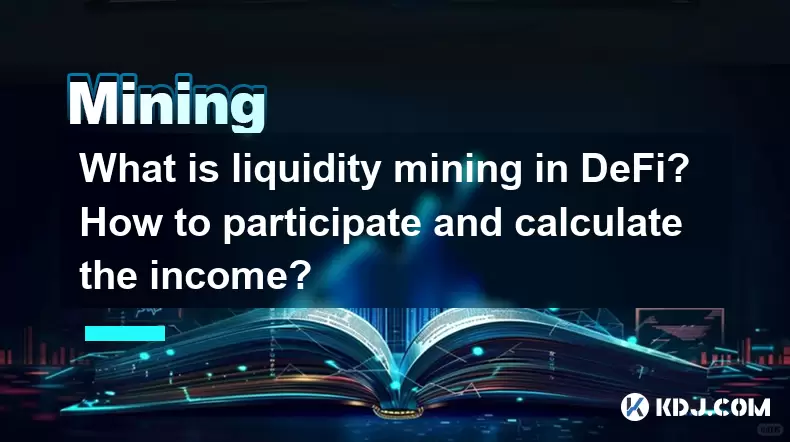
What is liquidity mining in DeFi? How to participate and calculate the income?
Jun 20,2025 at 03:21pm
Understanding Liquidity Mining in DeFiLiquidity mining is a core concept in the decentralized finance (DeFi) ecosystem that allows users to earn rewards by providing liquidity to decentralized exchanges (DEXs) or lending platforms. In traditional finance, liquidity providers are usually institutional players, but DeFi democratizes this process, enabling...
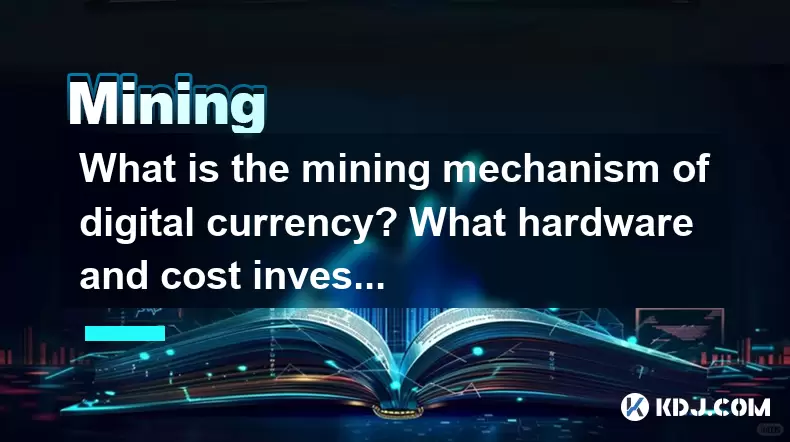
What is the mining mechanism of digital currency? What hardware and cost investment are required?
Jun 23,2025 at 06:29am
Understanding the Mining Mechanism of Digital CurrencyThe mining mechanism of digital currency is a foundational process that ensures transaction validation and network security. In most Proof-of-Work (PoW) cryptocurrencies like Bitcoin, miners compete to solve complex mathematical puzzles using computational power. The first miner to find a valid solut...
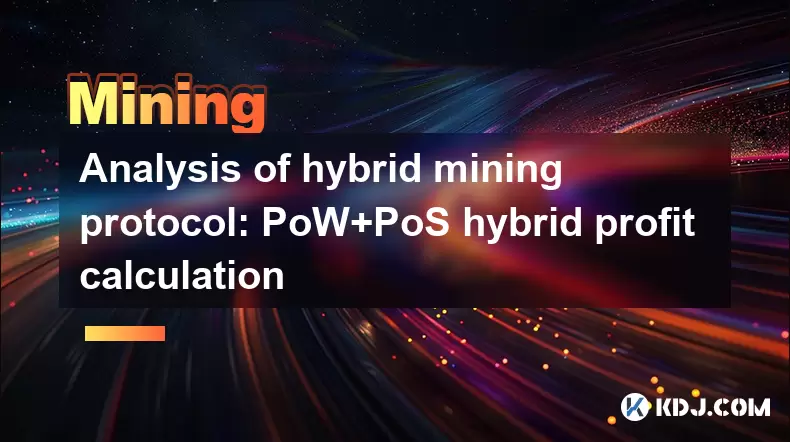
Analysis of hybrid mining protocol: PoW+PoS hybrid profit calculation
Jun 23,2025 at 10:15am
Understanding Hybrid Mining ProtocolsIn the realm of blockchain technology, consensus mechanisms are pivotal in maintaining network integrity and transaction validation. A hybrid mining protocol combines two or more consensus algorithms to achieve a balance between security, decentralization, and energy efficiency. The most commonly adopted hybrid model...
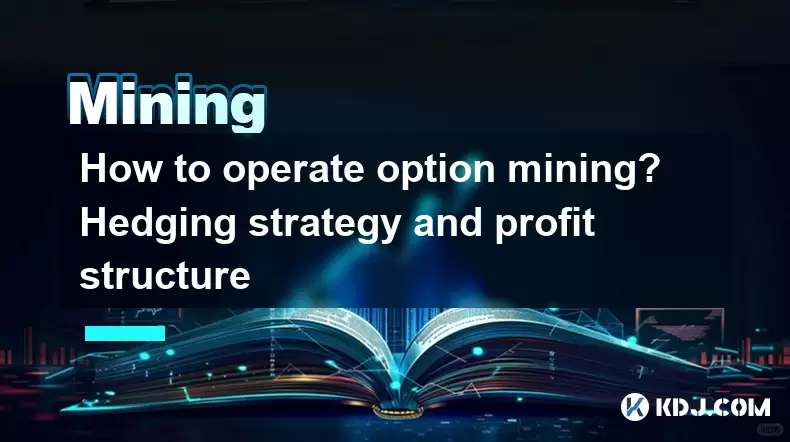
How to operate option mining? Hedging strategy and profit structure
Jun 21,2025 at 03:29pm
What is Option Mining?Option mining refers to a decentralized finance (DeFi) strategy where participants provide liquidity or take specific derivative positions in options protocols to earn rewards. Unlike traditional yield farming, option mining often involves liquidity provision for options markets, allowing users to generate returns through premiums ...
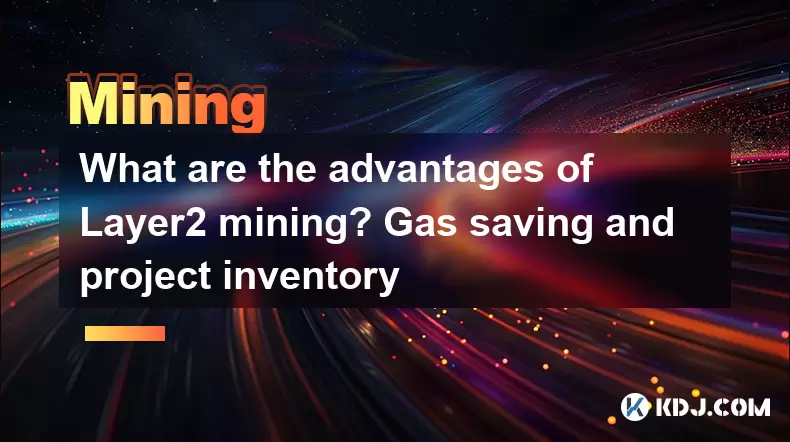
What are the advantages of Layer2 mining? Gas saving and project inventory
Jun 20,2025 at 04:50am
Understanding Layer2 Mining and Its SignificanceLayer2 mining refers to the process of participating in decentralized applications or protocols that operate on top of a primary blockchain (such as Ethereum) using scaling solutions like Optimism, Arbitrum, or zkSync. Unlike traditional mining on Layer1 blockchains, which often involves high computational...

Is contract mining safe? Key points of smart auditing and vulnerability prevention
Jun 19,2025 at 08:08pm
Understanding Contract Mining in the Cryptocurrency SpaceContract mining refers to a method within blockchain ecosystems where users can participate in mining operations through smart contracts. Unlike traditional mining, which requires physical hardware and technical expertise, contract mining allows participants to invest funds into a mining pool or p...

What is liquidity mining in DeFi? How to participate and calculate the income?
Jun 20,2025 at 03:21pm
Understanding Liquidity Mining in DeFiLiquidity mining is a core concept in the decentralized finance (DeFi) ecosystem that allows users to earn rewards by providing liquidity to decentralized exchanges (DEXs) or lending platforms. In traditional finance, liquidity providers are usually institutional players, but DeFi democratizes this process, enabling...

What is the mining mechanism of digital currency? What hardware and cost investment are required?
Jun 23,2025 at 06:29am
Understanding the Mining Mechanism of Digital CurrencyThe mining mechanism of digital currency is a foundational process that ensures transaction validation and network security. In most Proof-of-Work (PoW) cryptocurrencies like Bitcoin, miners compete to solve complex mathematical puzzles using computational power. The first miner to find a valid solut...

Analysis of hybrid mining protocol: PoW+PoS hybrid profit calculation
Jun 23,2025 at 10:15am
Understanding Hybrid Mining ProtocolsIn the realm of blockchain technology, consensus mechanisms are pivotal in maintaining network integrity and transaction validation. A hybrid mining protocol combines two or more consensus algorithms to achieve a balance between security, decentralization, and energy efficiency. The most commonly adopted hybrid model...

How to operate option mining? Hedging strategy and profit structure
Jun 21,2025 at 03:29pm
What is Option Mining?Option mining refers to a decentralized finance (DeFi) strategy where participants provide liquidity or take specific derivative positions in options protocols to earn rewards. Unlike traditional yield farming, option mining often involves liquidity provision for options markets, allowing users to generate returns through premiums ...

What are the advantages of Layer2 mining? Gas saving and project inventory
Jun 20,2025 at 04:50am
Understanding Layer2 Mining and Its SignificanceLayer2 mining refers to the process of participating in decentralized applications or protocols that operate on top of a primary blockchain (such as Ethereum) using scaling solutions like Optimism, Arbitrum, or zkSync. Unlike traditional mining on Layer1 blockchains, which often involves high computational...

Is contract mining safe? Key points of smart auditing and vulnerability prevention
Jun 19,2025 at 08:08pm
Understanding Contract Mining in the Cryptocurrency SpaceContract mining refers to a method within blockchain ecosystems where users can participate in mining operations through smart contracts. Unlike traditional mining, which requires physical hardware and technical expertise, contract mining allows participants to invest funds into a mining pool or p...
See all articles

























































































